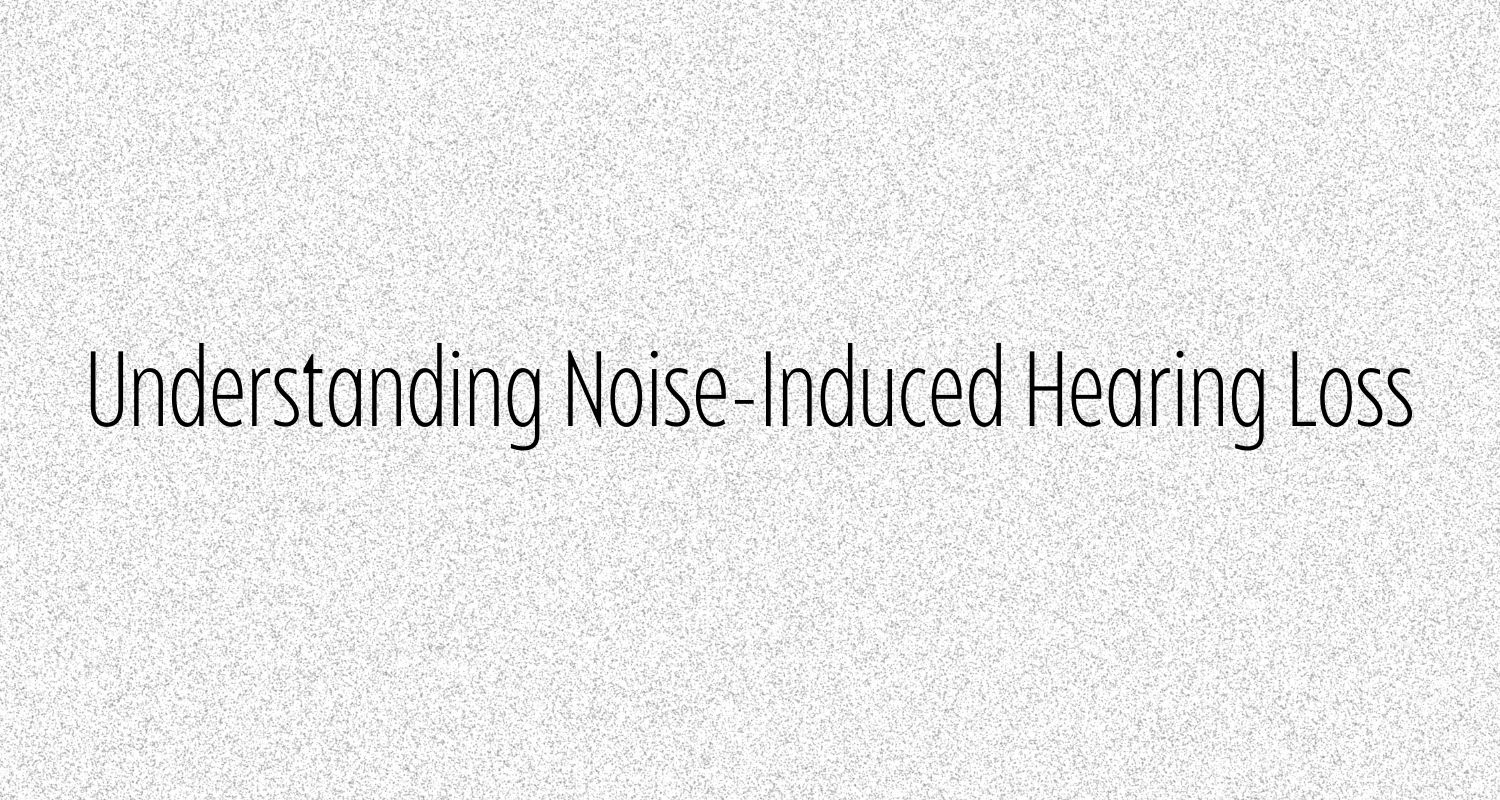Understanding Noise-Induced Hearing Loss

There are misconceptions about hearing loss that does nothing to advance healthy hearing. Many people think that living with hearing loss is an inevitable consequence of aging. While it is true that one-third of people over the age of 65 have hearing loss, it is a condition that can be both treated and in some cases, even prevented. And more than that, who says 65 is old?
Types of hearing loss
There are two types of hearing loss: sensorineural, when the inner ear or nerves are damaged, and conductive hearing loss, in which the problem lies external to the inner ear. Many types of conductive hearing loss are reversible, with ear wax being a major culprit.
But sensorineural hearing loss is mostly irreversible in a vast majority of cases. And yes, aging is a major factor resulting in age-related hearing loss, when we lose access to inner ear cells due to the natural aging process. But, it’s also a highly treatable condition.
Noise-induced hearing loss
Another type of hearing loss that closely resembles age-related hearing loss is noise-induced hearing loss, which occurs when the ear is exposed to excessive noise. This can happen slowly over the course of decades or all at once in an event like an explosion or accident with incredibly loud sounds.
Like age-related hearing loss, access to the cells of the inner ear is lost. These cells are responsible for collecting noise from the external world and turning it into sound information. This sound information is then sent to the brain via the auditory nerve. In the brain, the sound information is translated into meaning. This entire process happens so quickly it is not a conscious process.
When the fine cells of the inner ear are harmed, they do not repair themselves or regenerate. Instead, we simply lose access to them and the noise they could collect. Over time, as these cells die, our hearing worsens. The symptoms are subtle and a professional hearing exam is recommended.
Safe volumes
Our ears are incredibly efficient and durable. They can withstand noises up to 85 decibels (the unit of measurement of sound) with no problem at all. To put that into perspective, a verbal conversation is usually measured at around 60 decibels while busy city traffic at close range might be closer to 85 decibels. We can also hear crisp fall leaves rustling at only 20 decibels.
When volumes exceed 85 decibels, though, we start to put our hearing at risk. The Occupational Safety and Health Administration (OSHA) has developed guidelines for safe listening practices. We have a daily noise dose and 95 decibels over the course of 8 hours is the limit. The duration lessens as volume increases. At 100 decibels, the recommended exposure time is 2 hours. At 115 decibels, it shortens to just 15 minutes. Many experts recommend adopting personal limits below even what OSHA outlines as safe.
Commonplace dangerous sounds
You might think that it’s simple to live a life without encountering harmful sound environments, but you’d be wrong! It’s astounding how loud our modern world can regularly be. Mowing the lawn, a commonplace weekend chore in many towns across the country puts you in dangerous territory at 90 decibels. If you perform this chore regularly, consider adopting protective earwear.
In an unregulated industry, volume-wise, movie theaters average a volume of around 96 decibels and sometimes exceeding 100, even at children’s films.
Sporting events are another weekend ritual throughout the United States. Millions of people pack stadiums to watch their team vie for victory. And they’re pretty noisy about it, too. Sporting events at crowded stadiums can reach volumes of 100-130 decibels. If you’re a season ticket holder, consider monitoring your environment and giving yourself quiet breaks every hour or so.
Ways to protect your hearing
We all participate in situations that might be harmful to our hearing, but that doesn’t mean we can’t protect ourselves. You could turn your smartphone into a decibel measuring device by choosing an app like Decibel X, which produces fairly accurate readings. This way, you can measure the decibels you are being exposed to and choose to intervene if they’re too loud.
Custom hearing protection is always an option and provides the most reliable buffer between your ears and too-loud sounds. You might also consider giving yourself quiet breaks as often as possible, to lessen your daily volume intake. And always watch the volumes on your headphones, earbuds, and personal devices. They can reach dangerous levels and so it’s best to keep them in the middle and never louder than two-thirds maximum volume.
